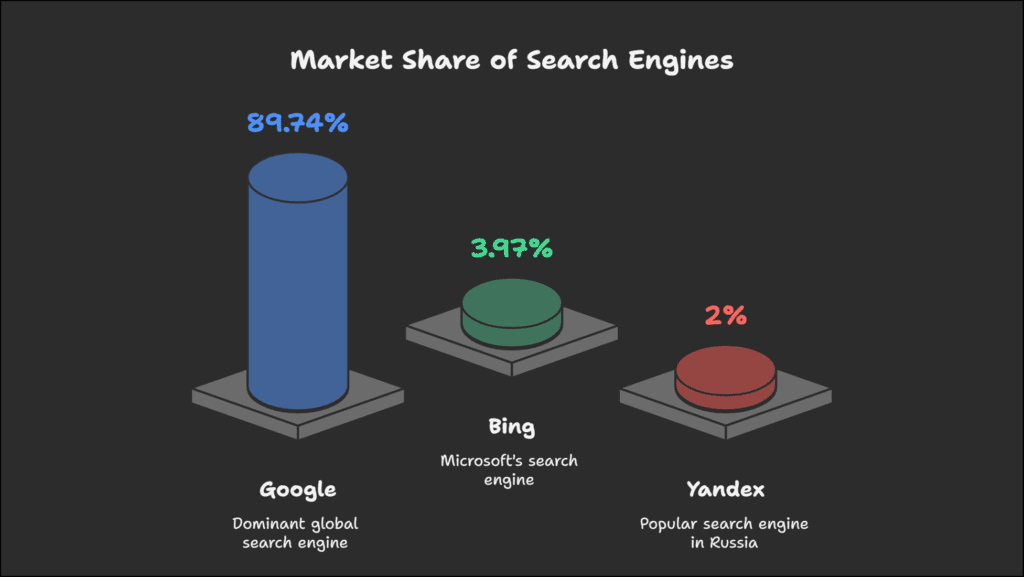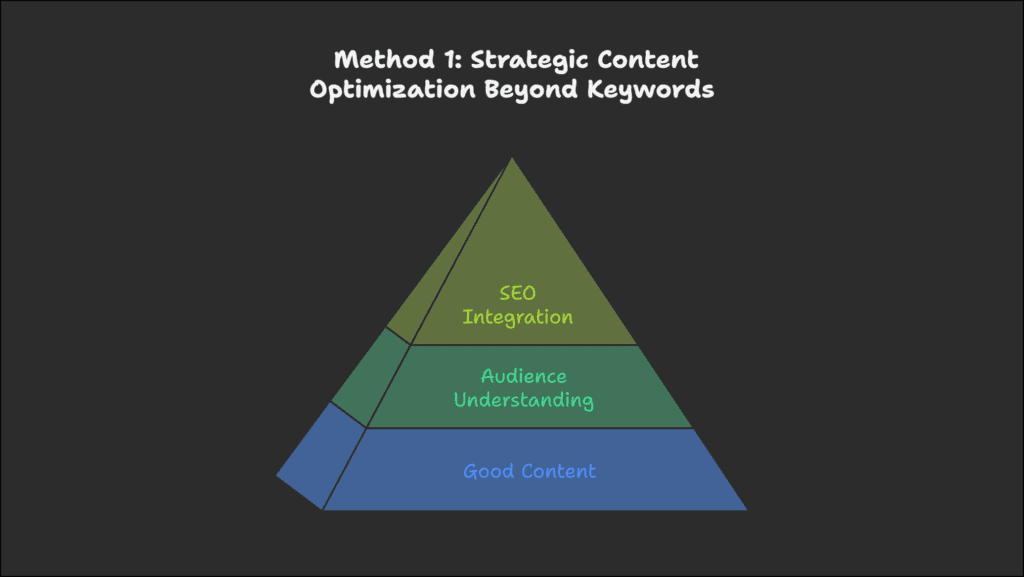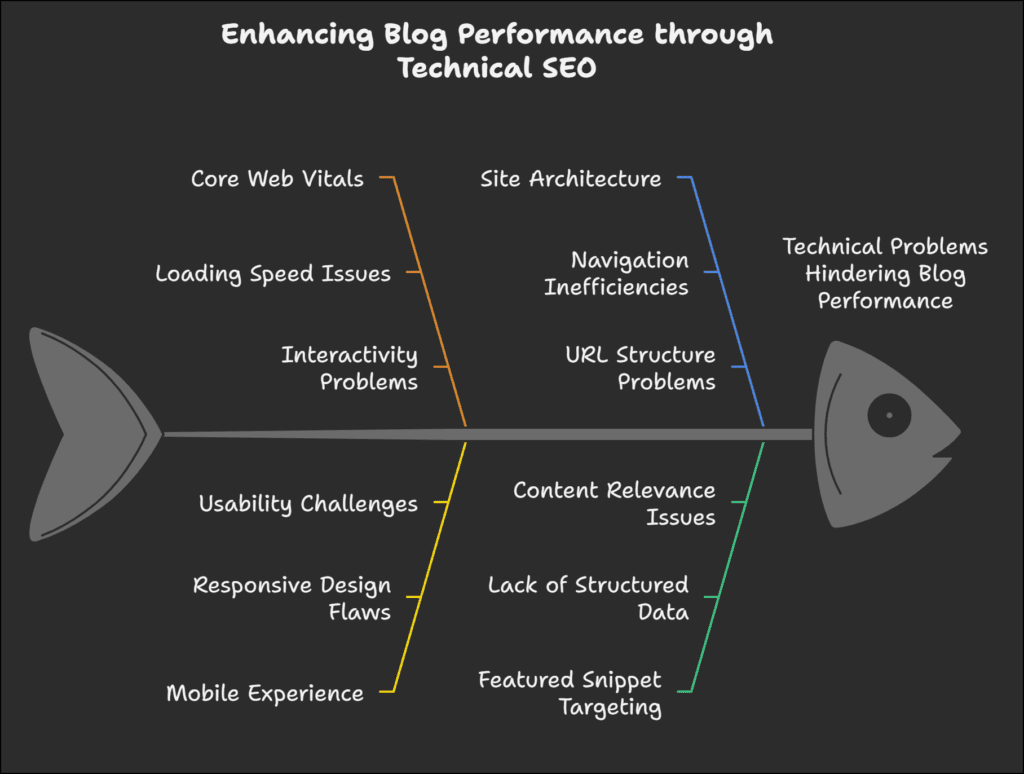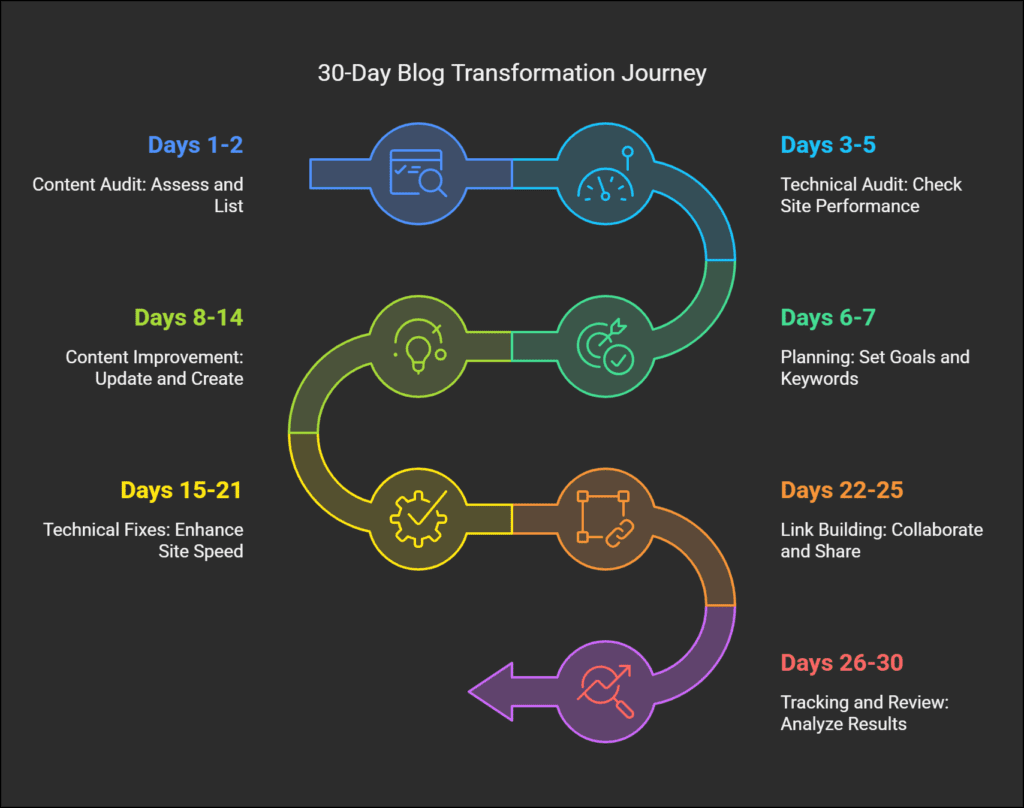In 2025, making your blog show up in search results is super important.
This guide will show you 3 Ways to Transform Your Blog with SEO. You will learn to write better content, fix your website problems, and get more links.
These tips will help more people find your blog.


Get your free SEO Score
Understanding the SEO Landscape in 2025

The internet has many search engines. Google is the biggest one. About 89.74% of people use google to find things online.
Bing has only 3.97% of users. Yandex has about 2% of users.
Every second, people do 99,000 searches on Google. That means lots of chances for people to find your blog!
Google's Dominant Position
SEO Trends in 2026 Future SEO Trends in 2026 Future SEO Trends in 2026 Future SEO Trends in 2026 Future SEO Trends in 2026 Future SEO Trends in 2026 Future SEO Trends in 2026 Future
Google is the most visited website ever. About 68% of online experiences start with a search engine.
Since so many people use Google, it’s very important to follow Google’s rules.
Impact of AI and Search Evolution
In 2025, three big things are changing how search works: AI tools, Google’s trust rules, and searches that don’t need clicks.
Google now uses smart computer programs to understand what people write. This means your blog needs to be good and helpful.
Why Blog Transformation is Critical Now?

If your blog doesn’t follow good SEO rules, people won’t find it. Your blog will be hidden on page 10 of Google. No one goes there!
About 75% of people never look past the first page of search results. If you’re not on page one, you’re missing out.
Conversion Potential Analysis
When people visit your blog, you want them to do something. You may want them to buy something or sign up for emails.
About 2.3% of visitors take action for blogs. If your blog gets 10,000 visitors, 230 people might do what you want.
Without good SEO, you can only get 1,000 visitors and 23 actions.
3 Ways to Transform Your Blog with SEO in 2025
Method 1: Strategic Content Optimization Beyond Keywords

The first way to make your blog better is to write really good content.
Advanced Keyword Integration Strategies
Keywords are the words people type when they search. One good way to find keywords is to check Reddit.
Reddit is a place where people talk about things they like. If you look at what they say, you can find good keywords.
For example, if you write about dogs, you could check the r/dogs group. You might find people talking about “puppy training tips” or “best dog food for allergies.”
Search Intent Mapping Techniques
It’s important to know why people are searching. Some people want to learn. Others want to buy something.
Your content should match what people want. If someone wants to learn how to bake cookies, don’t try to sell them a mixer right away.
Semantic Keyword Implementation
Semantic keywords are words that go with your main topic. If your topic is “cake recipes,” semantic keywords might be “baking,” “frosting,” or “birthday party.”
Using these related words helps Google understand what your content is about.
Creating E-E-A-T Optimized Content
E-E-A-T stands for Experience, Expertise, Authoritativeness, and Trustworthiness. Google likes content that shows these things.
- Experience: Have you actually done what you’re writing about?
- Expertise: Do you know a lot about the topic?
- Authoritativeness: Do other people think you’re an expert?
- Trustworthiness: Can people trust what you say?
Expertise Signaling Methods
Here are ways to show you’re an expert:
- Tell people about your training or certificates
- Share your personal experience.
- Show before and after pictures.
- Tell stories about how you helped others.
- Include your picture and bio.
For example, if you have a cooking blog, tell people you went to cooking school or have been cooking for 20 years.
Content Structure for Maximum Impact
How you organize your content matters. Good structure makes content easier to read. It also helps with SEO.
Here’s a good structure:
- Clear title that includes your main keyword
- A short intro that tells what the content is about
- Headings that break up the content
- Short paragraphs (2-3 lines)
- Bullet points for lists.
- Pictures or videos
- Summary at the end
Optimal Content Length Considerations
Longer content often does better in SEO. Content with more than 3,000 words gets 3 times more traffic than shorter content.
It also gets 4 times more shares and 3.5 times more backlinks.
But don’t just add words to make it longer. Every word should be helpful.
Method 2: Technical SEO Excellence

The second way to make your blog better is to fix technical problems.
Core Web Vitals Optimization
Core Web Vitals are measurements of how good your website is. They check if your site loads fast and works well.
Google likes websites that load quickly and don’t jump around while loading.
Page Speed Enhancement Techniques
Fast websites rank better in Google. Here are ways to make your blog faster:
- Use a good hosting service
- Make images smaller
- Remove things you don’t need
- Use tools that make your site faster.
People don’t like to wait. If your site is slow, they will leave.
Mobile Experience Prioritization
In 2025, 92.3% of people use phones to look at websites. Your blog must work well on phones.
Here’s how to make your blog phone-friendly:
- Make sure it looks good on small screens
- Make buttons big enough to tap
- Make sure the text is easy to read.
- Test your site on different phones.
Featured Snippet Targeting
Featured snippets are special boxes at the top of search results. They have a click rate of 42.9%, which is very high.
To get in these special boxes:
- Answer questions clearly
- Use the question as a heading.
- Give a direct answer right after
- Use lists or tables when you can
For example, if people search “how to tie shoes,” make a heading that says “How to Tie Shoes” and then list the steps.
Site Architecture Refinement
Site architecture means how your pages link together. A good structure helps visitors find all your content.
Tips for good structure:
- Make sure all pages are easy to find
- Use clear categories
- Include a search box.
- Create a site map
- Use breadcrumb links to show where people are
Method 3: Strategic Link Building and Authority Development

The third way to make your blog better is to get more links from other websites.
Internal Link Optimization Framework
Internal links connect pages on your site. They help visitors find more of your content.
Good internal linking practices:
- Link related content together
- Use words that describe the linked page.
- Link to your most important pages often
- Update old content with links to new content.
For example, if you write a new post about dog training, add links to it from your older posts about dogs.
External Link Acquisition Strategies
External links come from other websites to your blog. They are very important for SEO.
Ways to get external links:
- Ask relevant websites to link to you.
- Write guest posts on other blogs.
- Make infographics or tools people will share
- Help fix broken links on other sites.
For example, Backlinko created a big guide to SEO that got links from over 1,000 websites because it was so helpful.
Digital PR Techniques for Natural Backlinks
Digital PR means getting your blog mentioned online. This can lead to natural links.
Digital PR strategies:
- Share your research
- Help reporters with their stories.
- Build relationships with bloggers in your field.
- Sponsor events or charities
For example, you could survey 100 people about a topic in your field and share the results. News sites might link to your findings.
Social Signals and Brand Authority
Social media helps build your brand and can indirectly help SEO. When more people know about you, more people might link to you.
Social Media Integration Tactics
Ways to use social media for your blog:
- Share all new content on social media
- Create nice pictures for each platform.
- Join and talk in relevant groups.
- Answer questions in your field
- Talk with your followers.
Measuring Blog SEO Performance

You need to track results to know if your SEO is working.
Key Performance Indicators Framework
Key Performance Indicators (KPIs) are measurements that show progress.
For blog SEO, important KPIs include:
- Visitors from search engines
- Keyword rankings
- Click-through rate (CTR)
- Time on page
- Bounce rate
- Conversion rate
Traffic and Engagement Metrics
Traffic metrics show how many people visit your blog. Engagement metrics show what they do there.
Important metrics to track:
- Total Visitors
- Unique visitors
- Page views
- Average time on page
- Pages per session
- Social shares
- Comments
For example, if your blog gets 5,000 visitors a month and they stay for 2 minutes on average, you can increase both numbers.
Implementation Roadmap: 30-Day Transformation Plan

Here’s how to make your blog better in 30 days.
Week 1: Audit and Strategy Development
Days 1-2: Content audit
- Make a list of all your content
- Check which content is doing well.
- Find content that needs improvement.
- Look for topics you haven’t covered.
Days 3-5: Technical audit
- Check how fast your site loads
- Test how it looks on phones.
- Look for broken links.
- Check your site structure.
Days 6-7: Make a plan
- Set clear goals
- Choose important keywords
- Plan new content
- List technical fixes needed.
Weeks 2-3: Tactical Implementation
Days 8-14: Content improvement
- Update old content that isn’t doing well
- Create new content for important topics.
- Make sure to show your expertise.
- Fix headings and formatting.
Days 15-21: Technical fixes
- Make your site faster
- Fix any phone viewing problems
- Add a special code to help Google understand your content.
- Improve how your pages link together.
Week 4: Measurement and Refinement
Days 22-25: Link building
- Reach out to relevant sites
- Create shareable content
- Fix broken links on other sites.
- Start working with other content creators.
Days 26-30: Set up tracking and review
- Set up or improve analytics
- Create dashboards to track progress.
- Review early results
- Adjust your plan as needed.
Future-Proofing Your Blog SEO Strategy

SEO changes quickly. Here’s how to stay ahead.
Adapting to Emerging Trends
Keep an eye on these trends for 2025:
- More AI in search
- More voice searches
- More visual searches
- More focus on phones
- Changes in how Google shows results
Voice Search Optimization Techniques
Tips for voice search:
- Focus on question words (who, what, when, where, why, how)
- Use natural language
- Create FAQ pages
- Keep answers short and clear.
For example, people might say, “Hey Google, how do I bake chocolate chip cookies?” Make sure your content answers these kinds of questions.
Continuous Learning Resources
Places to learn more about SEO:
- Search Engine Journal
- Moz Blog
- SEMrush Blog
- Ahrefs Blog
- Google Search Central Blog
Recommended Tools and Platforms
Helpful SEO tools:
- Google Search Console (free)
- Google Analytics (free)
- SEMrush or Ahrefs (paid)
- Screaming Frog (free version available)
- Yoast SEO (free version available)
Conclusion
Making your blog better with SEO takes work, but it’s worth it. By using these three methods content optimization, technical excellence, and link building you can get more visitors and better results.
Remember, SEO changes all the time. What works today might not work tomorrow. Keep learning and be ready to change your plan.
Start with small steps. You don’t have to do everything at once.
Frequently Asked Questions
How to do SEO for a blog?
SEO (Search Engine Optimization) helps your blog show up higher in search results (like Google). To do SEO:
- Use keywords (words people search for).
- Write useful, easy-to-read content.
- Make sure your blog loads fast and works on mobile.
- Get other websites to link to your blog (backlinks).
What are the Four elements of SEO for blog articles?
- Keywords: Research and use words people search for (e.g., “best coffee recipes”).
- Content Quality: Write helpful, original, and easy-to-read articles.
- On-Page SEO: Optimize titles, headings, URLs, and add meta descriptions (short summaries for search engines).
- Backlinks: Get other trusted websites to link to your blog.
How to improve your SEO?
- Update old posts with new keywords or info.
- Link to other posts on your blog (internal links).
- Use short, clear URLs (e.g., yourblog.com/healthy-snacks).
- Add alt text to images (describe them for search engines).
- Fix broken links (links that don’t work).
- Share your blog on social media to get more visitors.






